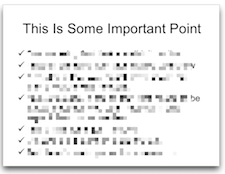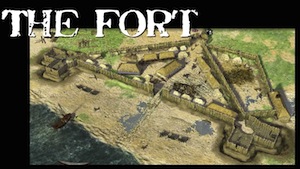Why Lecture Has a Place in My History Classroom
A MiddleWeb Blog

Because every teacher represents a different mix of these various elements, it is patently ridiculous to recognize a particular pedagogical methodology as the “right” or “best” way to teach at all times. There are certainly principles that hold true under most circumstances, but, as with any art, once a person is familiar with the rules, those same rules can be safely bent to a particular end.
Among the methods that are most frequently either misused or maligned, lecture stands out.
Now euphemistically referred to as “direct teaching” in my district, lecture generally divides the older traditional teachers from younger teachers. Debates between these two sides can lead to an “all or none” approach to lecture. My own classroom falls somewhere between these two extremes.
Forward into the past

Up to half of my students at any given time do not have regular access to the internet or a working computer. Even if they did have regular access, many struggle with academic English, and lack the metacognitive skills to recognize their failure to comprehend a passage. Anything students were required to view at home would need to be repeated in the classroom in its entirety.
Giving students an overview of a lesson or unit in person (“direct teaching”) gives me an opportunity to gauge the room. Even when the entire class is hesitant to ask questions, I can assess whether the students require additional background or support to understand the concept being introduced.
Often I will ask individual students to clarify what I am saying for the entire class. This serves two purposes: if my explanation was not satisfactory, it will be immediately obvious when the student cannot articulate what I was saying. On the other hand, if I was clear, the students now get to watch one of their peers interpret and summarize information in their own words, a skill with which all of my students struggle.
Short, focused and visual

When I use PowerPoints, I try to make them entirely visual, showing 3-5 slides that might pique student interest or illustrate concepts that will present a challenge when they are reading the related text. As the majority of my students read below grade level, I use these brief introductions to what they will be reading, along with memorable visuals, as a scaffold to reading comprehension.
When dealing with a particularly difficult text or concept, I will sometimes use lecture as an active pre-reading activity. In such cases I will create a slideshow with roughly the same number of slides as paragraphs the students will be reading. The slideshow will include pictures, maps, graphs and other visuals.

While this does put me in front of the class for longer than ten minutes, it is an activity that engages students actively with the text, and it appears to help with their comprehension of the text when they break into small groups and read.
The right tool, the right use
I do not think that lecture, in isolation, is a pedagogically sound practice. However, I have also found that trying to function completely without the brand of lecture I describe here will not lead to better academic results for my students.
While a relatively small fraction of my instructional time is taken up with lecture, it still plays an important role in my classroom. As with any other available tool, it is mostly a matter of finding its best use, rather than abandoning it entirely due to historic misuse.































I like your approach to “lecture” – thanks for the ideas. Best wishes in the remaining weeks of school. anne
Hi Aaron, I think you point the virtue of not throwing the baby out with the bath water. Thanks!